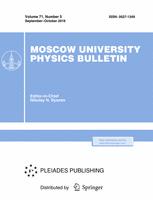Annotation
We study the impact of the type of the pulse sequence, the registration algorithm, and the data processing regime on the shape of a two-dimensional heteronuclear $J$-spectrum. It is shown that the widely used processing techniques for two-dimensional heteronuclear $J$-spectra can lead to a distortion of lineshapes and a significant loss of information. We suggest a scheme of optimal transformation of the free induction decay signal that allows one to obtain a phase-sensitive spectrum with cross-peaks that have absorption lineshapes in both frequency coordinates. The result was tested experimentally on chloroform-$^{13}$C, a model spin system of the AX type.
Received: 2010 July 14
Approved: 2011 September 21
PACS:
82.56.Fk Multidimensional NMR
82.56.Jn Pulse sequences in NMR
82.56.Jn Pulse sequences in NMR
© 2016 Publisher M.V.Lomonosov Moscow State University
Authors
D.O. Sinitsyn$^1$, D.A. Cheshkov$^{2,3}$, V.A. Chertkov$^2$
$^1$Department of Mechanics and Mathematics, Moscow State University, Moscow, 119991, Russia
$^2$Department of Chemistry, Moscow State University, Moscow, 119991, Russia
$^3$Institute of Chemistry and Technology of Organoelement Compounds, sh. Entuziastov 38, Moscow, 111123, Russia
$^1$Department of Mechanics and Mathematics, Moscow State University, Moscow, 119991, Russia
$^2$Department of Chemistry, Moscow State University, Moscow, 119991, Russia
$^3$Institute of Chemistry and Technology of Organoelement Compounds, sh. Entuziastov 38, Moscow, 111123, Russia



